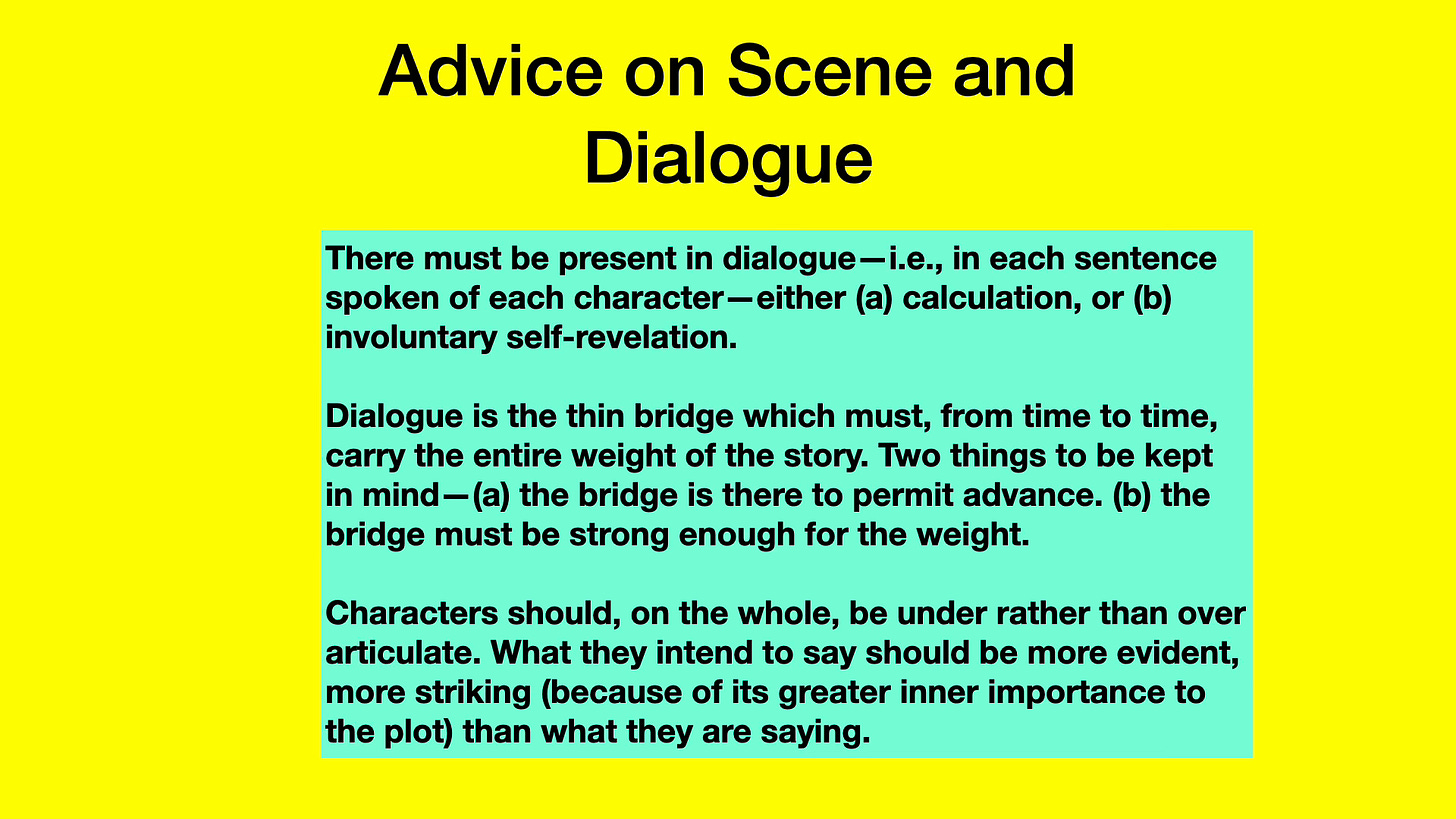Our “Dear Willow” video:
Note on production value: Eleanor lives in a remote farmhouse with 19th century wifi, so her feed was slightly dodgy quality —will be better soon …
Willow’s Question:
“What is your process,
each of you, for taking a
novel-length
work from First Draft
stage to the submission stage?”
https://substack.com/@willowstonebeck
Dear Willow,
The tough part was getting that first draft: the invention. I say, Never mess with that—that’s where the magic lies.1
Once I had the invention–some 10 years of research and writing, Lordy! for my novel Who by Fire, I needed to find out what was wrong with it.
I like to say when I teach, “Editing is always a secondary task”— and editing was key after I, finally, had that draft.
Five trusted readers, not all writers, one a former creative writing student, did this. I agree with Eleanor: “Never family.” I’m forever grateful to all five.
The biggest learned-thing was you gotta keep a separate timeline for a novel, something I now always do but didn’t for that novel and it took me forever (a little hyperbole) to recreate that timeline and then fix stuff.
So my bottom line, Willow, is make a timeline in a separate document as you write. Hope you were smarter than I and have already done this. Do let me know. I want to hear from you.
Other key things I learned:
· Get rid of your “darlings” – those sentences I loved but that added little and often did stuff I didn’t need, no matter how “good” I thought they were.
· I checked the opening sentence and the last sentence of every chapter for excess words or lack of sharpness (sort of like “the darling” problem).
· I examined conflict for each main character to make sure the conflict was layered. I talk about how this is key in a lesson.2
· I looked for narrative that ought to be scene, meaning dialogue, because I knew dialogue raises up the story, like a play, for the reader—but I needed to make sure.
· I checked the dialogue: Make it slant, I kept telling myself in the editing stage. Elizabeth Bowen explains this better: Dialogue should be unintentionally self-revelatory or calculation.
· I cut any summary in dialogue and gave that stuff to the narrator.3
· More about dialogue from Elizabeth Bowen:
And here’s Flannery O’Connor’s advice, as I mentioned in the video: She tells us that when she was writing “Good Country People” she didn’t know the ending “until ten or twelve lines” before it happened and then she realized it was “inevitable” and “a shock for the reader … and the writer.” To put this simpler: Endings must feel both inevitable and surprising to the reader and the writer.
Love,
Click to ➡️ Eleanor’s answer to Willow’s Q.
My p.s.: I have a full course that I introduce here—the link is for you to take a gander—it’s free…. https://marytabor.substack.com/p/write-it-how-to-get-started
If you missed our launch post, take a look at Write it! and This Writing Life. They are separate sections—the course is simply another option.
Ask us a question in Comments or on Notes (be sure to tag us both).
See Lesson 2: Inspiration versus Perspiration and this one, also FREE: On Reading Lewis Hyde
For more about conflict, see lesson 9 "Trouble or Conflict"
Rules are made to be broken: A prime example is Hemingway’s Big Two-Hearted River: Nick talks once to a grasshopper and twice to himself. I want to add here that the marvelous A. Jay Adler is currently writing about Hemingway; he may have more to say about this marvelous two-part story that has virtually no dialogue.






Fabulous inspiration to start my Saturday! Challenge for me, how does a poet create an elevator pitch? How does one describe poetry? This is my challenge with my music.
God, so exceptionally helpful. I'm going to reply to the emails in the next day or two, but just wanted to comment and say thank you for the thoughtful responses--both in video, and written out here.
I've got 3 novel-length drafts finished, and won't be letting myself leap onto another first-draft until at least one is ready for submission.
This + some very helpful advice from S.E. Reid in a note has me feeling less like a fool adrift in the ocean with a raft and nothing else to a fool adrift in the ocean, but with a little boat and a compass.
Going to try and make time to get through that course of yours, looks great. I'm also enjoying coming into contact with your writing, being a fan of Eleanor's already before the start of this project.